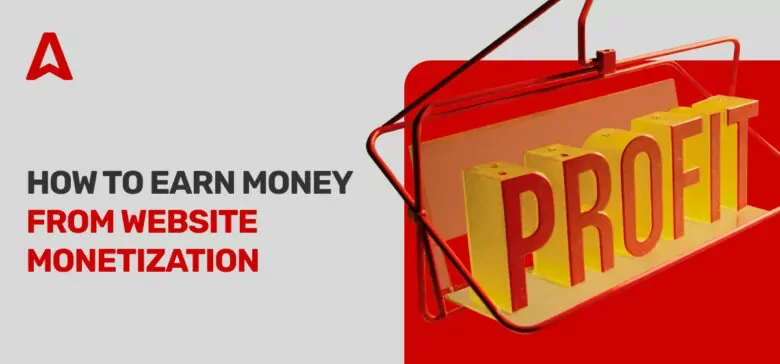In 2025, a website isn’t just an online portfolio or digital storefront — it’s one of the most flexible and profitable assets for how to make money from a website. Whether you’re a blogger, creator, small business owner, or niche community builder, understanding how to generate income from a website opens doors to financial independence and scalable growth.
What’s exciting is that the online economy has evolved far beyond simple banner ads. Today, websites make money through creative partnerships, subscription models, content monetization, affiliate networks, and even data-driven collaborations. The opportunities keep expanding as user behavior, AI tools, and advertising ecosystems shift toward more sustainable, user-first strategies.
So if you’re looking for practical, updated, and ethical ways to turn your traffic into steady revenue — this guide is for you. Below, we’ll explore what’s working now, what’s fading out, and how to position your site to thrive in 2025 and beyond.
Why Monetize Your Website Now? Key Trends and Opportunities
Right now is the perfect time to turn your website into a revenue engine. The digital landscape is shifting rapidly, and how websites make money is being redefined by technology and user preferences. Artificial intelligence has made content creation and audience targeting easier than ever, while privacy regulations are pushing brands to seek transparent, value-driven partnerships with website owners.
In 2025, businesses are investing heavily in creator-led marketing, micro-niches, and community-based platforms. That means even smaller sites with authentic audiences can generate income from their websites through brand collaborations, affiliate marketing, or premium content offerings.
At the same time, the rise of remote work and side hustles has fueled a global wave of digital entrepreneurs. People are no longer asking if they can earn online — they’re asking how to make money from a site efficiently, sustainably, and without compromising user trust.
By understanding emerging monetization models and aligning them with your niche, you can position your website to profit — not just today, but for the years ahead.
With massive or moderate web traffic, you can increase earnings by placing ad codes from Adsterra. Choose your best format!
Choosing a Niche That Pays: Research and Validation Tips
Before you dive into monetization, you need to make sure your website speaks to an audience that actually spends money. That starts with picking the right niche. If you’ve ever asked yourself how to earn from a website, the answer almost always begins here — with a topic that has both passion and profit potential.
The best-paying niches in 2025 combine consistent search interest, clear user intent, and opportunities for multiple income streams. Think iGaming, finance, health, education, software, remote work, or personal growth. But even smaller sub-niches — like sustainable beauty or digital nomad budgeting — can perform exceptionally well if you solve a real problem and attract a loyal following.
Start with market validation: check keyword volumes, social engagement, and the monetization models competitors use. That’s how you’ll see how you can make money from a website like yours. You don’t need millions of visitors — you need the right ones. Once you find your focus, you can earn money using your website strategically by matching content to products, services, or partnerships that fit your niche perfectly.
Below is a case study of a publisher making $14,000 monthly from the lucrative movie niche:
Core Monetization Strategies: Proven Ways to Generate Income
Now that you’ve locked in your niche, it’s time to explore how to earn money by making a website that works for you. Monetization today is a mix of creativity, data, and consistency. There’s no one-size-fits-all model — the best websites combine multiple revenue streams to stay resilient and scalable.
Below, we’ll cover the most reliable approaches for anyone wondering how to make money off a website or how can we earn money from a website — including ads, affiliate marketing, and other high-ROI methods that don’t require selling your own product.
Mastering Display Ads and PPC Networks
Display advertising remains one of the simplest and most accessible ways to earn revenue from a website. If you have steady traffic and quality content, ad networks like Google AdSense, Adsterra, or others can turn your page views into passive income.
Here’s how it works: advertisers pay to display banners or contextual ads on your site. You earn a share of that revenue each time users view or click the ads. It’s a straightforward answer to how to earn money from web without having to manage inventory or services.
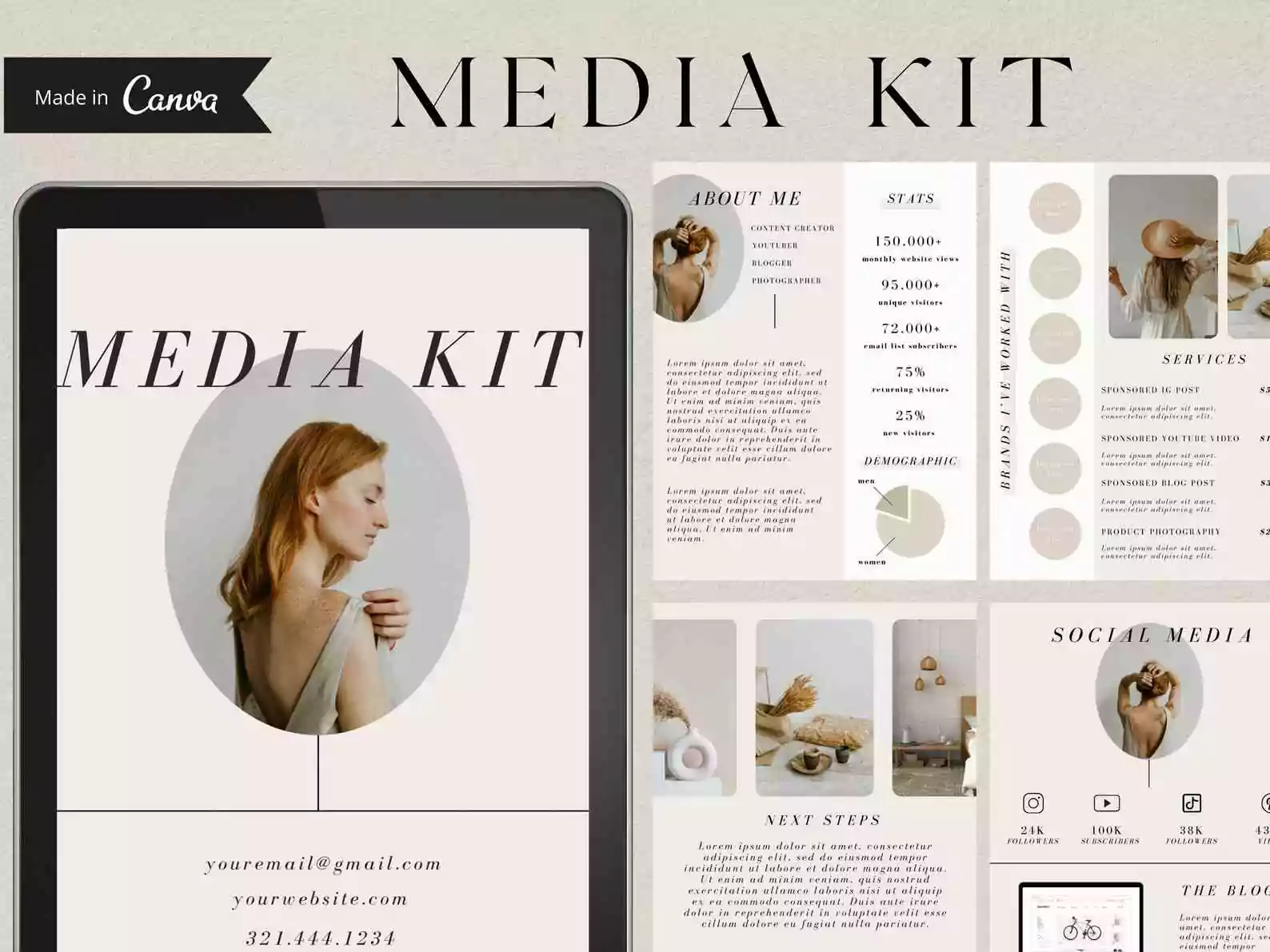
To maximize results, focus on improving traffic quality and engagement. Well-placed ads on relevant pages convert far better than random placements. As your audience grows, you can upgrade to premium networks or direct brand deals for higher CPMs — an advanced yet effective way to earn money using your website consistently.
Adsterra links website publishers to relevant ads that’ll earn them optimal revenue. We give you access to a network of 15,000+ reputable advertisers across many niches
Affiliate Marketing: Partnering for Profits Without Inventory
If you want to know how can we make money from a website without selling anything yourself, affiliate marketing is the go-to strategy. It’s a performance-based model where you promote products or services and earn a commission for every sale or action made through your referral link.
The appeal is clear: you don’t need stock, shipping, or customer support — just trust and relevance. When you recommend tools, courses, or products that genuinely help your audience, you earn money from your website naturally.
To get started, join affiliate programs within your niche. Integrate links through honest reviews, tutorials, or listicles. The more authentic and useful your content, the more sustainable your earnings will be.
Affiliate marketing perfectly demonstrates how to make money off a website while building authority in your field — one partnership at a time.
Sponsored Content and Brand Collaborations
One of the most profitable — and often overlooked — ways to make money from a website is through sponsored partnerships. Brands are constantly searching for trusted voices with genuine audiences, and your website could be that bridge.
So, how can I earn money from a website through sponsorships? It’s simple: companies pay you to feature their product, review their service, or include their brand in relevant content. You maintain creative control, while they gain exposure. It’s a win-win.
When done right, sponsored content feels natural and helpful — not pushy. That’s key to long-term success. Be transparent about partnerships, keep recommendations aligned with your audience’s needs, and track engagement to prove your value.
As influencer marketing evolves, even micro-sites with loyal communities can get income from a website this way. The focus has shifted from mass impressions to meaningful interactions — which means quality content pays off, literally.
Selling Digital Products and Services Directly
If you have expertise, creativity, or a strong brand, selling digital products is one of the most direct ways to make money with a website. Think online courses, e-books, templates, coaching sessions, or exclusive workshops.
Unlike physical goods, digital products have minimal overhead and infinite scalability. Once you create a valuable resource, it can generate passive income for months or years. That’s exactly how websites earn money without relying on third-party platforms.
Freelancers and creators can also offer consulting or premium services right on their sites — turning expertise into income streams. When combined with strong personal branding and automated checkout tools, it’s one of the most efficient models for making money from a website long-term.
Your audience already trusts your insights. Packaging that trust into something they can buy is simply the next logical step.
Ecommerce Integration: From Dropshipping to Custom Merch
Adding ecommerce capabilities to your site opens endless possibilities to make money on a website. Even if you don’t produce your own goods, you can start small through dropshipping — selling items directly from suppliers without handling inventory yourself.
For creators, selling custom merch (like apparel, mugs, or digital prints) can build community while also getting income from a website. Platforms like Shopify, WooCommerce, and Printful make the setup seamless, letting you focus on marketing and customer experience.
If you prefer more control, you can move beyond dropshipping into branded collections or curated product lines. The key is alignment — your products should match your site’s theme and values. That’s how do websites get paid consistently: by offering something the audience genuinely wants.
Ecommerce isn’t just for big stores anymore. In 2025, anyone with an audience and creativity can turn a personal site into a profitable storefront.
Memberships and Subscriptions: Recurring Revenue Goldmines
If one-time sales bring quick wins, memberships bring stability. Subscription-based models are the secret to how do websites earn money steadily month after month.
By offering exclusive content, premium tools, community access, or early releases, you can make money from a website while building deeper relationships with your audience. People love feeling part of something valuable and personal — and they’re willing to pay for it.
You can implement subscriptions via Patreon, Memberstack, or built-in tools from platforms like Wix or WordPress. The recurring model means predictable income and loyal retention — the ultimate combination for making money from a website long-term.
In short, if you’re wondering how do you make money from a website that grows sustainably, memberships and subscriptions might just be your best answer.
Success story: The Wall Street Journal
The Wall Street Journal is one of the most popular business and economy newspapers in the world. Originally a print paper founded in the 19th century, it successfully pivoted to a digital strategy and has amassed nearly 3 million digital subscribers, giving it hundreds of millions in annual revenue.

Accepting Donations and Crowdfunding from Loyal Fans
Sometimes the most genuine way to make money with a website is by letting your community support you directly. If you’ve built a loyal following that benefits from your work — be it through tutorials, insights, or entertainment — donations and crowdfunding can be a surprisingly powerful income stream.
Platforms like Buy Me a Coffee, Patreon, and Ko-fi make it easy to accept contributions or launch funding goals without needing complex ecommerce systems. It’s a practical example of how to make money from your website through goodwill and genuine value exchange.
The key here is transparency. Show supporters exactly how their contributions help sustain the project or improve your content. When done authentically, this model not only helps earn money off a website, but also strengthens your relationship with the audience — turning followers into partners.
In 2025, fans want to invest in creators they trust. Offering them that option is both smart and empowering.
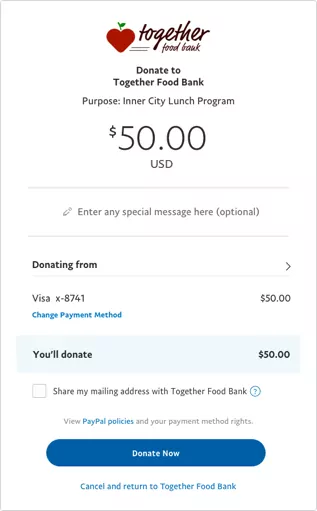
Source: PayPal
Flipping Websites: Buy Low, Optimize, Sell High
If you enjoy optimization, analytics, and a bit of digital entrepreneurship, website flipping is one of the most dynamic ways to make money out of a website. Think of it like real estate — but online. You buy undervalued sites, improve their performance, boost traffic and monetization, and then sell them for profit.
This model shows clearly how a website can make money even without long-term ownership. Platforms like Flippa, Empire Flippers, or Motion Invest connect buyers and sellers, while modern tools help evaluate traffic, SEO potential, and revenue data.
To succeed, focus on sites with clean domains, steady traffic sources, and clear monetization paths. With the right tweaks — better SEO, updated design, or diversified income channels — you can make money from a website by dramatically increasing its market value in a few months.
It’s fast-paced, data-driven, and perfect for those who love making money on websites through strategy and creativity rather than content creation alone.
Success story: Electric.Travel
John Ahbury, a serial entrepreneur, founded a website to review electric bikes and related accessories. He grew the website, Electric.Travel, and amassed thousands of monthly page views, earning money primarily from affiliate commissions.
After years of running Electric.Travel, Asbury listed it for sale on Flippa. He received several bids and sold the website for $55,000, not bad for a one-man business.
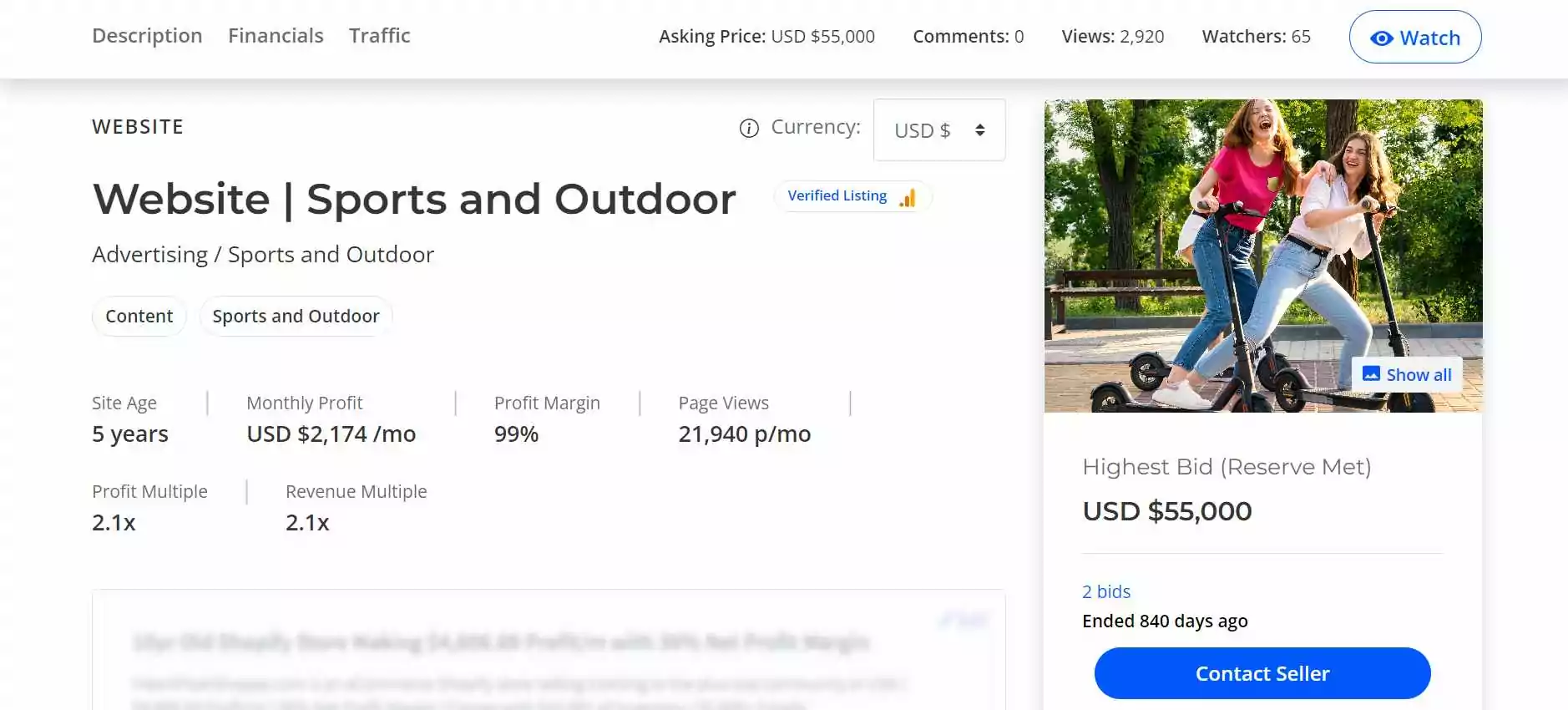
Lead Generation and Data Sales: Monetizing Your Traffic
Traffic is valuable — especially when it’s targeted. Many professionals overlook how to make money using a website by turning visitors into qualified leads. Businesses in every niche are willing to pay for accurate, verified leads that match their ideal customer profile.
Here’s how a website can make money this way: you attract visitors through relevant content or tools, collect information via forms or gated resources, and share that data (ethically and legally) with companies that need it. It’s a classic model used in real estate, finance, education, and software — and still one of the highest-ROI methods in digital marketing.
Alternatively, you can build lead funnels for your own products or affiliate partners. When you know how to nurture your audience, making money on websites becomes a repeatable, automated process.
Just remember — transparency and compliance matter. Always disclose data collection and respect privacy laws. Done right, lead generation is one of the most strategic ways to make money from your website while providing genuine value to both users and partners.
Adsterra helps you monetize your website with high-paying ads from global advertisers. Our Anti-AdBlock feature helps you increase your revenue by up to 35%, and we offer various ad formats for mobile and desktop views.
Advanced Optimization: Scaling Your Earnings
Once your monetization channels are in place, the next step is optimization — turning good results into great ones. At this stage, it’s not just about how to make a website and make money, but how to scale it efficiently and sustainably.
To grow revenue in 2025, think like a data strategist. Every tweak to your content, ad placement, or funnel can boost conversions, retention, and audience loyalty. Whether you’re using display ads, affiliates, or memberships, optimization is what separates side projects from true digital assets.
Below are three proven ways to elevate your performance and earn more money from your website without burning out or relying solely on luck.
Traffic Growth Hacks: Beyond Basic SEO
You can’t scale revenue without traffic — and not all traffic is created equal. Understanding how to get money from a website begins with bringing in the right visitors, not just more of them.
In 2025, growth means going beyond traditional SEO. Focus on building authority in micro-niches, leveraging social proof, and using AI-powered keyword clustering to target long-tail opportunities. Combine organic search with newsletters, community engagement, and referral programs to keep users coming back.
Guest posting, collaborations, and appearing in podcasts or expert roundups are also powerful tactics for making money with a website, as they drive both backlinks and trust.
Remember, traffic isn’t just numbers — it’s potential income. Each qualified visitor is a chance to make money on a website if your funnel, offer, and content align perfectly.
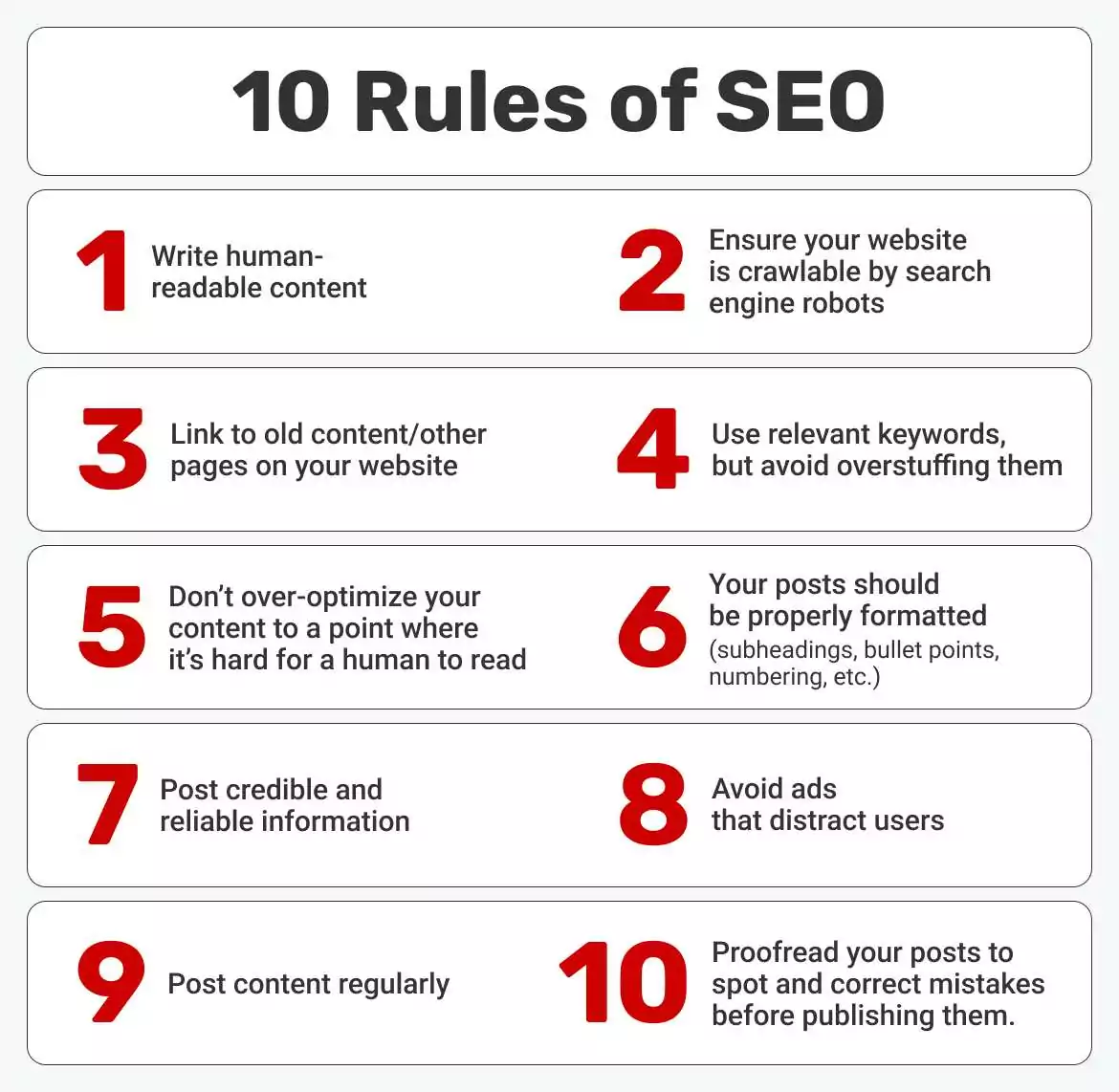
Analytics and Testing: Data-Driven Revenue Boosts
If you’re wondering how does a website make money more effectively, the answer almost always involves data. Analytics reveal what’s working, what’s wasting space, and where untapped potential lies.
Use tools like Google Analytics 4, Hotjar, or Microsoft Clarity to study user behavior. Which pages convert best? Where do people drop off? Small changes — a headline tweak, a call-to-action reposition, faster load times — can significantly increase your earnings.
A/B testing is your best friend here. Run experiments on ad placements, affiliate link formats, and content layouts. Data-driven refinements turn assumptions into strategy, helping you make money with a website more predictably.
The more insights you gather, the easier it becomes to understand how to earn money from your website at scale — and to double down on what truly delivers results.
Diversifying Income: Reducing Risk in Volatile Markets
Relying on one income stream is risky. Algorithm changes, ad policy updates, or market shifts can impact even the strongest websites. Smart owners know how to create a website and make money across multiple channels — so one slowdown doesn’t kill the entire business.
Mix and match models: combine ads with affiliate links, digital products, and sponsorships. Build an email list or community that you own — platforms come and go, but your audience remains.
In uncertain markets, resilience equals profitability. By diversifying, you safeguard your cash flow and build long-term sustainability. This is how professionals make money from a website even when trends shift or traffic dips.
Ultimately, how do I make money from my website in a changing landscape? By staying flexible, informed, and always ready to evolve. That’s what keeps your online income not just alive — but thriving.
Future-Proofing Your Website Business
Digital trends evolve fast, and what worked last year might not deliver the same results tomorrow. To stay ahead, you need to think beyond short-term wins and focus on how to earn money with a website that adapts to constant change.
Start by diversifying both your content and your income sources. As technology and user behavior shift, your strategy should, too. Keep experimenting with new monetization tools, ad networks, and engagement channels — that’s how websites make money sustainably.
Automation and AI are your allies here. Use them for smarter analytics, personalized content recommendations, and better ad targeting. The more efficiently your website runs, the more time you have to focus on strategy and creativity — not just maintenance.
And if you’re skilled in design or development, remember there’s another layer: you can also make money from making websites for clients or small businesses. This hybrid approach — combining your own projects with service-based income — gives you both flexibility and financial security.
Above all, protect your audience’s trust. Transparency, privacy compliance, and value-driven content will keep your brand strong no matter how the digital landscape evolves. That’s how to make your website make money in the long term — by building something people actually believe in.
Final Thoughts
By now, you can see there’s no single formula for success — only adaptable strategies and consistent effort. Whether you’re exploring how can I make money from my website through ads, affiliates, or digital products, or focusing on how to make money on websites through services and memberships, the principles remain the same: create value, grow trust, and diversify smartly.
Owning a website today isn’t just about publishing content — it’s about running a digital business. The more you experiment, analyze, and evolve, the stronger your earning potential becomes. From ad revenue to community models, each step teaches you how to earn money on a website in ways that fit your unique goals.
So, keep learning, keep testing, and treat your site like an asset — not just an online space. With the right approach, it can generate income, stability, and creative freedom for years to come. And if you’re ready to take that step, this is your moment to master how to make money from a website.
FAQs
Can I earn money from my website?
Absolutely. There are dozens of ways to make money from websites, whether you’re a blogger, business owner, or creator. You can start small — by displaying ads, joining affiliate programs, or offering sponsored content — and then expand into advanced strategies like digital products, memberships, or online courses.
The key is understanding your audience and aligning monetization with their needs. Once you know what people visit your site for, you can learn how to make money from your site by providing valuable content, products, or services that fit that intent.
For a deeper dive into practical methods, check out this step-by-step guide on website monetization — it covers beginner-friendly and advanced options to help you make money from your website effectively in 2025.
How many views on a website to make money?
There’s no fixed number, but traffic quality matters far more than traffic volume. Some websites earn with just a few thousand loyal visitors per month, while others need tens of thousands. It depends on how you monetize — affiliate marketing, ads, or digital products all scale differently.
Generally speaking, to make money on the website through ad networks like Adsterra or Google AdSense, you’ll want at least several thousand monthly visits from engaged users. However, with affiliate links or premium services, even a smaller audience can be highly profitable if your niche has high conversion rates.
If you’re focused on scaling your traffic strategically, read this guide on profitable website ideas — it shows how to pick niches that grow fast and help you make money from websites more efficiently.
Do website owners get paid?
Yes — and often in multiple ways. Website owners make money from websites through advertising, affiliate programs, product sales, subscriptions, and sponsorships. Each model pays differently: some reward you per click or impression, others per sale, signup, or monthly membership.
If you’re wondering how do you make money from your website specifically, it starts with choosing the right combination of methods that match your content and audience. For example, content-heavy blogs thrive on display ads, while service-oriented sites perform best with lead generation or affiliate deals.
Website income can also be passive. Once set up properly, you can continue to make money from your site around the clock — even while you sleep. To explore tailored monetization models, visit this Adsterra article on directory website monetization, which breaks down real examples of ongoing online revenue.
How does 1-page website make $21,000 per month?
It’s all about focus and conversion. Even a single-page website can generate impressive income if it targets a profitable niche and executes flawlessly. Or — when its owner cooperates with the right network. Many one-page sites make money from websites through high-converting affiliate links, paid traffic funnels, or lead generation forms that feed into larger business systems.
For example, such a site might offer a valuable resource — like a free guide or calculator — and capture user leads, later monetizing them through email campaigns or partner offers. It’s an advanced yet efficient model for how to make money on the website with minimal maintenance.
So yes, one well-optimized page can outperform a full blog if it’s designed for conversions and monetized strategically. Once you understand how to make money from your site through clear funnels and compelling CTAs, scaling income becomes a matter of replicating what works best.
To learn what types of websites bring in serious profits, see Adsterra’s guide to profitable website ideas — it highlights real examples and proven approaches to how to make money from a website in 2025.
